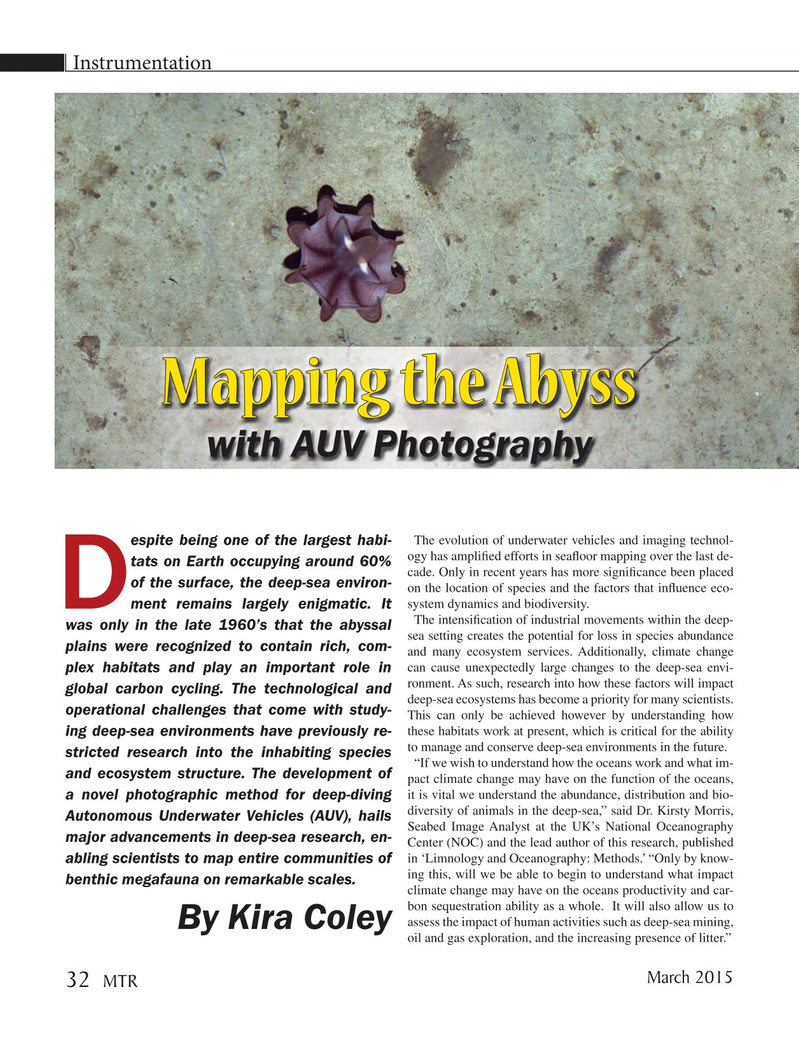
Page 32: of Marine Technology Magazine (March 2015)
Oceanographic Instrumentation: Measurement, Process & Analysis
Read this page in Pdf, Flash or Html5 edition of March 2015 Marine Technology Magazine
Instrumentation
Mapping the Abyss Mapping the Abyss with AUV Photography
The evolution of underwater vehicles and imaging technol- espite being one of the largest habi- ogy has ampli? ed efforts in sea? oor mapping over the last de- tats on Earth occupying around 60% cade. Only in recent years has more signi? cance been placed of the surface, the deep-sea environ- on the location of species and the factors that in? uence eco- system dynamics and biodiversity. ment remains largely enigmatic. It
D
The intensi? cation of industrial movements within the deep- was only in the late 1960’s that the abyssal sea setting creates the potential for loss in species abundance plains were recognized to contain rich, com- and many ecosystem services. Additionally, climate change can cause unexpectedly large changes to the deep-sea envi- plex habitats and play an important role in ronment. As such, research into how these factors will impact global carbon cycling. The technological and deep-sea ecosystems has become a priority for many scientists. operational challenges that come with study-
This can only be achieved however by understanding how these habitats work at present, which is critical for the ability ing deep-sea environments have previously re- to manage and conserve deep-sea environments in the future. stricted research into the inhabiting species “If we wish to understand how the oceans work and what im- and ecosystem structure. The development of pact climate change may have on the function of the oceans, it is vital we understand the abundance, distribution and bio- a novel photographic method for deep-diving diversity of animals in the deep-sea,” said Dr. Kirsty Morris,
Autonomous Underwater Vehicles (AUV), hails
Seabed Image Analyst at the UK’s National Oceanography major advancements in deep-sea research, en-
Center (NOC) and the lead author of this research, published in ‘Limnology and Oceanography: Methods.’ “Only by know- abling scientists to map entire communities of ing this, will we be able to begin to understand what impact benthic megafauna on remarkable scales. climate change may have on the oceans productivity and car- bon sequestration ability as a whole. It will also allow us to assess the impact of human activities such as deep-sea mining,
By Kira Coley oil and gas exploration, and the increasing presence of litter.”
March 2015 32 MTR
MTR #2 (18-33).indd 32 MTR #2 (18-33).indd 32 3/8/2015 2:28:33 PM3/8/2015 2:28:33 PM

 31
31

 33
33
